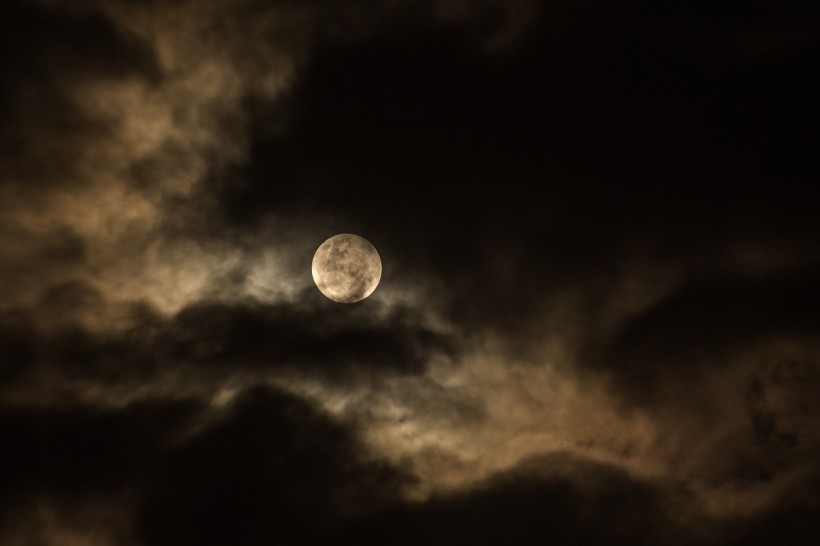For skywatchers, the full moon's rise is a monthly highlight. In 2024, experience the magic of 12 full moons, including two supermoons, a blue moon, and lunar eclipses, marking celestial events that stir the soul.
Experienced moon watchers recognize the challenges of observing the lunar surface during full moon nights, but the magic of its radiant ascent at dusk is unmatched.

12 Full Moons, 2 Supermoons, a Blue Moon, and Twin Lunar Eclipses Await Skywatchers This Year
12 Full Moons in 2024
Every full moon carries a name rooted in agricultural history. In 2024, there will be two supermoons and a seasonal blue moon. Despite fewer full moons than in 2023 due to the lunar year being 354 days, the upcoming year will host 12. Below are the full moon dates and times for 2024, as per Timeanddate.com, along with their North American names :
- January 25- Wolf Moon (17:54 UTC/12:54 p.m. ET)
- February 24- Snow Moon (12:30 UTC/7:30 a.m. ET)
- March 25- Worm Moon (07:00 UTC/3:00 a.m. ET); a penumbral lunar eclipse
- April 23- Pink Moon (23:48 UTC/7:48 p.m. ET)
- May 23- Flower Moon (13:53 UTC/9:53 a.m. ET)
- June 21- Strawberry Moon (01:07 UTC/9:07 p.m. ET)
- July 21- Buck Moon (10:17 UTC/6:17 a.m. ET)
- August 19- Sturgeon Moon (18:25 UTC/2:25 p.m. ET); a supermoon and a blue moon
- September 18- Harvest Moon (02:34 UTC/10:34 p.m. ET); a supermoon and a partial lunar eclipse
- October 17- Hunter's Moon (11:26 UTC/7:26 a.m. ET); a supermoon
- November 15- Beaver Moon (21:28 UTC/4:28 p.m. ET); a supermoon
- December. 15- Cold Moon (09:01 UTC/4:01 a.m. ET)
READ ALSO: First Full Moon of the Year Will Rise This Week Alongside the Quadrantids Meteor Shower
Lunar and Solar Eclipses in 2024
In 2024, there will be two lunar eclipses, each with its unique characteristics. The first, occurring on March 24/25, will be a penumbral lunar eclipse, where the full Worm Moon will pass through Earth's outer penumbral shadow.
This subtle event will take place from 12:51-5:35 a.m. EDT, causing the Moon to appear slightly dimmer than usual. While visible globally, the effects are minimal compared to a total lunar eclipse, and using binoculars or a telescope is recommended for a clearer view.
On April 8, 2024, a total solar eclipse will captivate Central and North America. The Moon will completely block the Sun, creating temporary darkness during the afternoon. This rare occurrence happens about twice a year globally, but a specific location witnessing such an event occurs only once every 400 years.
Communities are planning celebratory events, marking a unique experience. Astronomers emphasize the need for specialized eye protection when observing the solar eclipse.
The second lunar eclipse of 2024 is set for September 17/18, presenting a partial lunar eclipse during the Harvest Moon, also a supermoon. Around 8% of the moon will enter Earth's inner umbral shadow, displaying a rosy reddish hue from 10:12-11:17 p.m. EDT on September 17.
Visible across the Western Hemisphere, this event, like the March eclipse, is best observed with binoculars or a telescope. Lunar eclipses, occurring two or three times a year, are relatively common, with the next one visible from the U.S. scheduled for April 2025.
RELATED ARTICLE: Last Supermoon of 2023: Here's How To Watch the Full Harvest Moon
Check out more news and information on Full Moon in Science Times.



![Earth's Quasi-Moon Kamo‘oalewa Could Originate From Lunar Surface Not Asteroid Belt [Study]](https://1721181113.rsc.cdn77.org/data/thumbs/full/53275/89/56/50/40/earths-quasi-moon-kamo-oalewa-could-originate-from-lunar-surface-not-asteroid-belt-study.png)










